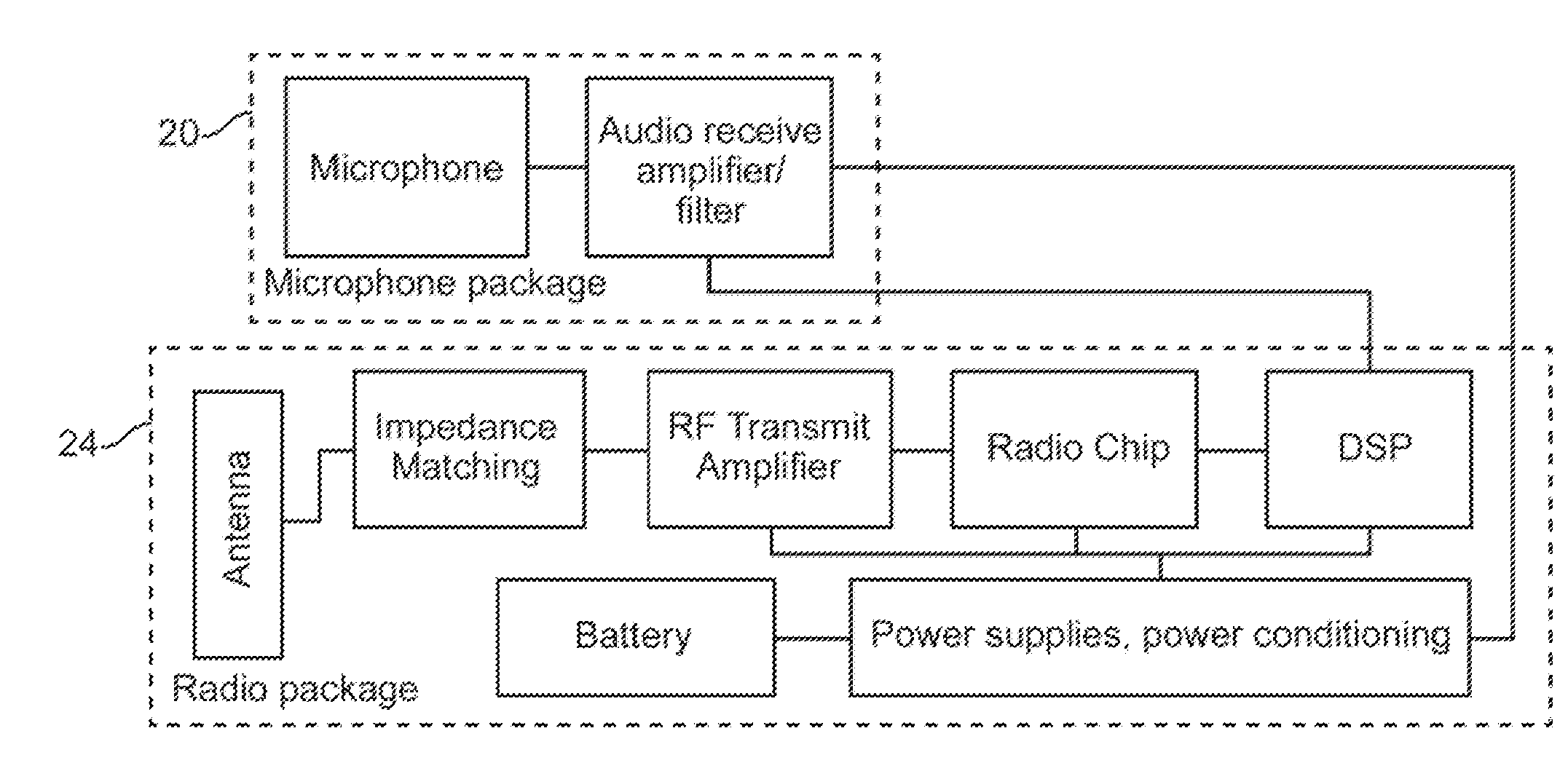Intra-oral tissue conduction microphone
a tissue conduction microphone and tissue technology, applied in the field of intraoral sensors, can solve the problems of reduced speech intelligibility, low sensitivity of boom microphones, and easy observation of bulky equipment, and achieve the effect of high sensitivity
- Summary
- Abstract
- Description
- Claims
- Application Information
AI Technical Summary
Benefits of technology
Problems solved by technology
Method used
Image
Examples
Embodiment Construction
[0035]In contrast to the subcutaneously-implanted microphone, which detects mechanical vibrations of the overlying (tissue) membrane much as an air-conducted microphone does, an intra-oral microphone used for ambient sound detection must respond to sound pressure waves that couple to and propagate through the soft tissue of the head. The air / tissue boundary of the head acts as a significant barrier to sound transmission due to impedance mismatch and scattering of the signal and only a small portion of the external sound pressure energy is transmitted to the embedded sensor. Normal incidence of a pressure wave at an air / water boundary results in a theoretical loss of 33 dB (99.9%) in acoustic intensity. Scattering effects also come into play and FEA models for a sphere of water in air (approximating the head) predict slightly higher acoustic attenuation.
[0036]Therefore an intra-oral tissue conduction microphone used for measuring ambient sound must have sufficient SNR (signal to nois...
PUM
 Login to View More
Login to View More Abstract
Description
Claims
Application Information
 Login to View More
Login to View More - R&D
- Intellectual Property
- Life Sciences
- Materials
- Tech Scout
- Unparalleled Data Quality
- Higher Quality Content
- 60% Fewer Hallucinations
Browse by: Latest US Patents, China's latest patents, Technical Efficacy Thesaurus, Application Domain, Technology Topic, Popular Technical Reports.
© 2025 PatSnap. All rights reserved.Legal|Privacy policy|Modern Slavery Act Transparency Statement|Sitemap|About US| Contact US: help@patsnap.com



